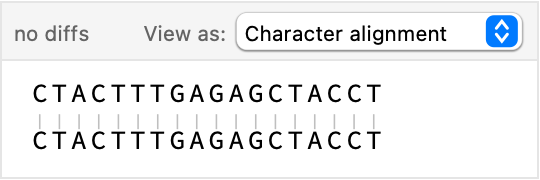Details and Options
EnsemblGenomeAssemblyConversion is based on
Ensembl, which provides comparative genomics information.
Genome assembly is the complete DNA sequence of an organism reconstructed from the smaller segments of sequenced nucleotides.
EnsemblGenomeAssemblyConversion can be used to convert the genome positions from the archived assemblies to those of more recent assemblies, or vice versa.
Inputs to the EnsemblGenomeAssemblyConversion include the common names of the input and output genome assemblies, as well as the chromosome positions in the input assembly, specified by the chromosome name and integer-based start and end coordinates.
Chromosome names are given by integer numbers or short names such as "1", "X", "mt" for chromosome 1, X, mitochondrion, respectively.
The following option can be given:
| "Species" | "human" | species for which to query; following scientific names and common names of species are accepted:
"Homo sapiens", "human", "Mus musculus", "mouse", "Danio rerio", "zebrafish",
"Caenorhabditis elegans", "Saccharomyces cerevisiae" |
![ResourceFunction["EnsemblGenomeAssemblyConversion", ResourceVersion->"1.0.0"]["GRCz11", "GRCz10", {10, 30000, 30100}, "Species" -> "Danio rerio"]](https://www.wolframcloud.com/obj/resourcesystem/images/2ac/2ac209b6-167d-44e0-988d-5c8e9297843f/1-0-0/30809aaafdc03385.png)

![chr10acc = ResourceFunction["NCBIEntrezData"]["human chromosome 10", "ESearch", "Database" -> "nucleotide", "IDType" -> "acc", "RetMax" -> 1]](https://www.wolframcloud.com/obj/resourcesystem/images/2ac/2ac209b6-167d-44e0-988d-5c8e9297843f/1-0-0/2bd96b3ea28e0c51.png)

![previousseq = StringTake[
ResourceFunction["ImportFASTA"][
StringSplit[chr10acc["IDList"][1], "."] /. {nc_String, ver_String} :> StringJoin[nc, ".", ToString[ToExpression[ver] - 1]], "BioSequence"], precoord]](https://www.wolframcloud.com/obj/resourcesystem/images/2ac/2ac209b6-167d-44e0-988d-5c8e9297843f/1-0-0/21d025a7c084c874.png)
